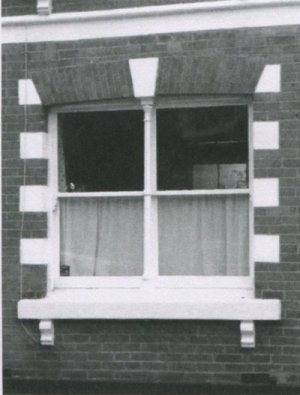Thomas Micklam - "Not Quite a Gentleman?" - TrustNews Mar 19
Hampshire Papers: Thomas Micklam 1847-1898, Architect, Surveyor, Drainage Engineer, Councillor - “Not Quite a Gentleman?"
This paper by Trust Council member Judith Martin had its City of Winchester Trust launch at the Heritage Centre last November, with the two downstairs rooms pretty packed. While the paper draws heavily on 19th century material from the Hampshire Record Office, the Trust had funded the modern photographs, so it made a good venue.
First, an explanation of the title. Thomas Micklam was an extraordinarily busy man, packing far more into his short life than most. Yet he seemed never to be accepted into Winchester society. Thomas Stopher, the much better-known architect whose portrait hangs in the Guildhall - he was mayor three times - must have known Micklam well, their careers ran in parallel as did their council tenure, yet when Micklam died Stopher didn't even note it in his journal. Stopher was a Liberal, Micklam a Conservative.

Window of a house in Garfield Terrace
Hyde Abbey Road
The phrase “Not quite a gentleman" comes from the remarkable and entertaining “Young - Visiters" (sic) by the nine-year-old Daisy Ashford, published in 1919. It seems relevant to Thomas Micklam as he was very probably born out of wedlock. His mother married his step - or adopted father when he was five years old. Micklam senior was clearly devoted, describing the younger man in his will as “my dear son Thomas Micklam otherwise Thomas Levett".
Micklam junior kept no diaries or other records, and none of the professional bodies to which he might be assumed to have belonged have any record of him. There is only a long list of building schemes in his name in the Hampshire Record Office, plus some entries in the local press. It can only be surmise, as but it must possible that the colossal work rate was a way of overcoming this initial disadvantage.
Between about 1878 and his death, Micklam designed at least 200 buildings, almost all in Winchester. He designed for the Cottage improvement Society, for small private developers - some his fellow members of the Conservative Party - and latterly for himself as investor. He built most of Victorian Hyde, much of Fulflood, some of the smart new area of Christchurch, some of the other new area of Highcliffe, and countless small incursions into the city centre. Early on in his career he made some additions to significant existing houses, including a billiard room for Richard Moss, later MP for Winchester, at his house in Portsmouth - Micklam‘s place of birth. As well as housing, he built small industrial buildings, including the building generally known as the Antiques Market in Silver Hill, and also added sanitation to many houses and also schools. All the houses he designed included sanitation, quite a new concept then.
As well as all this, he and his wife Jessie had nine children, all of whom survived to adulthood. This was quite an achievement at the time, possibly due to his expertise in drainage and sanitation. They lived modestly, in smallish houses - unlike his council peers who tended to prefer the upmarket new developments of St Giles’ Hill - but died well-off. In 1912 his widow and offspring owned about thirty properties across Winchester. His life provides a rare insight into Victorian Winchester that is usually disregarded by the historians.
Copies of the Hampshire Paper are available from the Heritage Centre, and from the Hampshire Record Office (price £6).
Judith Martin will be leading a walk around Hyde for the Trust, looking at Thomas Micklam’s work, on 6th June. This account gives only a small snapshot of a remarkable career.
